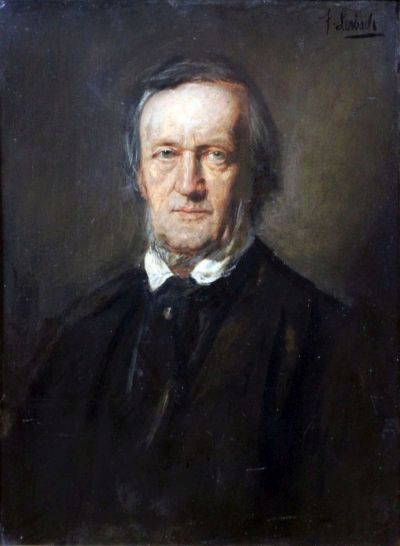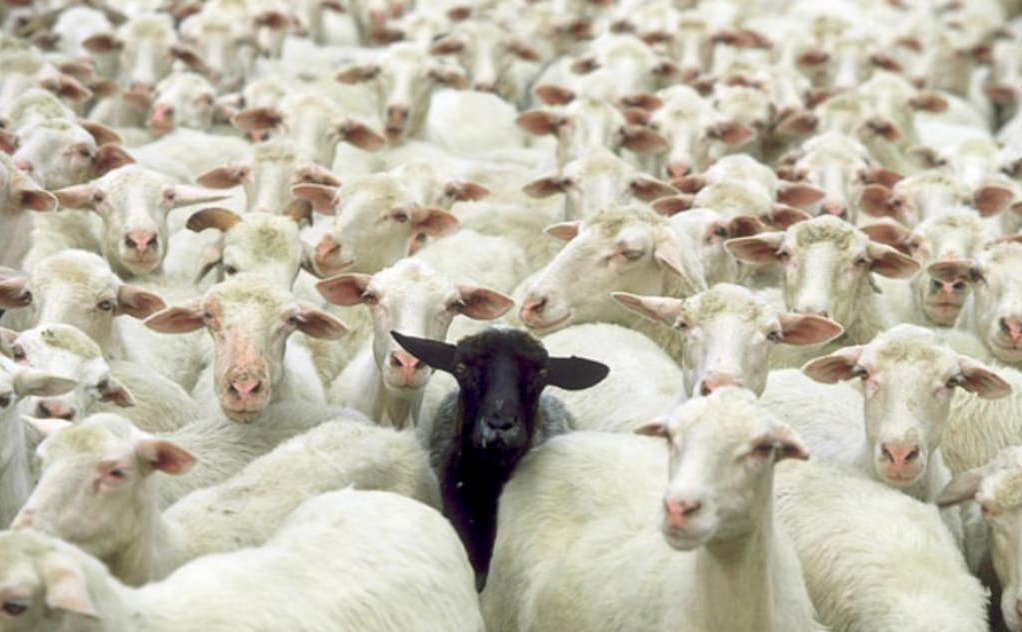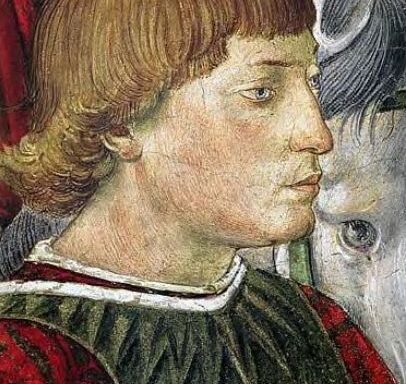Wagner’s Ring of the Nibelung is the most auspicious, grandiose, more-than-slightly unhinged, opera of all time. It’s such a big deal that people refer to opera and the musical arts as pre- or post-Wagner.
I am not trained in music theory or in opera, so if this is off the mark, please let me know. I’m going to start with the basics and build up to Wagner and the Ring Cycle Opera. Don’t worry, I’m going to assume you know very little if anything about each topic and lay down some basic groundwork on each.
This is going to be drinking from a fire hose. Wagner left such an impact that many books have been written about him and his works that I can’t begin to do more than touch on a few aspects.
A few examples of his legacy: Wagner was the first to have the orchestra lower than the stage and in its own pit, and the first to have the conductor to face the stage and away from the audience. He didn’t let latecomers into the theater, and strongly encouraged people to clap at the end of an act. Not that anyone else couldn’t have done these things. In fact, maybe some had done one or two of these things, but Wagner was the first one to set the standard others followed.
1. Basics of Opera
The basic storytelling elements in opera are recitatives and arias. Recitative is what moves the plot along. It’s the half-spoken, half-sung pieces of dialogue. There are gradations here. Secco, or dry, is spoken with only the continuo, the harmonic structure of the music, but recitatives do also involve more of the orchestra (recitativo accompagnato) which can and often lead up to arias, duets, etc. An aria is when one character is showcased to really let the audience know what he is feeling and the rest of the cast shuts up and offers support as props. The purpose of the aria is to drive home the emotions of the character singing.
For example of a solo aria, see the Queen of the Night’s aria from Mozart’s The Magic Flute. Here the Queen is demanding her daughter Pamina to take a dagger and assassinate Sarastro, the Queen’s hated rival, or she would curse Pamina. Here, the Queen owns the entire stage and everyone else is just there for support.
Another famous one is from Giachino Rossini’s The Barber of Seville, “Largo al Factorum.” Figaro is the only important character, everyone else serves mainly as props.
Now, arias aren’t the only way characters express emotions — there are duets, trios, etc.
“The Flower Duet” from Léo Delibes’ opera Lakmé is an example of an aria duet.
Recitatives drive the plot, arias the emotions.
But the two main parts — recitatives and arias — are the building blocks of an opera. Duets, etc, are continuations of the arias in that the singing characters are expressing their emotional state.
That is, until Wagner.
2. Basic Music Theory
Now let’s talk about music, specifically theme: motif and leitmotif.
A musical theme is an expression of music in a larger pieces that is complete unto itself. That is, it could stand apart from the rest of the work and be musically complete:
“A theme may be perceivable as a complete musical expression in itself, separate from the work in which it is found (Drabkin 2001). In contrast to an idea or motif, a theme is usually a complete phrase or period (Dunsby 2002). The Encyclopédie Fasquelle defines a theme as ‘Any element, motif, or small musical piece that has given rise to some variation becomes thereby a theme’ (Michel 1958–61).”
A theme can represent a person, place, or thing, but it doesn’t have to.
A motif is the shortest piece of musical expression of the theme. A motif is sort of like a word that’s part of the entire thematic sentence. It conveys musical cohesion so the listener can understand it’s part of the theme. But a motif cannot represent a person, place, or thing. The structure isn’t designed to carry that much meaning.
A leitmotif does represent a person, place, or thing. Think of Superman. His short leitmotif plays every time he’s on screen doing something heroic. You know it’s Superman because the music is in sync with the actions of the story. Even if you can’t see what’s happening, you know it’s Superman because of his leitmotif.
Remember what a leitmotif is — we’ll come back to that.
3. Richard Wagner
Richard Wagner was a man driven to be a composer. While he did receive some formal training, he learned much on his own by emulating other composers. I’m not going to go into his life, his marriages, debts, dodging of debt collectors, affairs, and so forth. It’s enough to say he had times of storms and times of peace, and often because of his actions and choices.
Wagner spent 25 years writing the Ring Cycle, taking time off now and then to write other operas and works to pay the bills, then designed a theater to showcase the opera in Bayreuth, Germany.
Wagner was religious, but much like his works, his views were complicated and not what we generally think of as being religious. Best I can tell, he saw religion as a source of inspiration and connecting man to the sublime. He pulled from German, Norse, and Greco-Roman myths as much, if not more, than from Christianity.
“When religion becomes artificial, art has a duty to rescue it. Art can show that the symbols which religions would have us believe literally true are actually figurative. Art can idealize those symbols, and so reveal the profound truths they contain… I believe in God, Mozart and Beethoven, and likewise their disciples and apostles; -I believe in the Holy Spirit and the truth of the one, indivisible Art; -I believe that this Art proceeds from God, and lives within the hearts of all illumined men; -I believe that he who once has bathed in the sublime delights of this high Art, is consecrate to Her forever, and never can deny Her; -I believe that through Art all men are saved.” (Wagner, Richard. “Religion and Art”)
One thing was clear, he had nothing but disdain for Jewish influence in the arts. For his opera Parsifal, Wagner’s benefactor, King Ludwig had lined up a Jewish conductor. ‘Wagner first suggested that Levi should convert to Christianity, which Levi declined to do. Wagner then wrote to King Ludwig that he had decided to accept Levi despite the fact that (he alleged) he had received complaints that “of all pieces, this most Christian of works” should be conducted by a Jew. When the King expressed his satisfaction at this, replying that “human beings are basically all brothers.”‘
Wagner replied to the King:
“The only explanation I can think of for my exalted Friend’s thoughtful judgment on the Jews is these people never enter the royal sphere. For you they remain a concept, whereas for us they are all too real. My relations with several of these people are friendly, solicitous, and full of compassion; but this is only possible because I regard the Jewish race as the born enemy of pure humanity and everything noble about it. They will be the ruination of us Germans, that is for sure. Perhaps I am the last German who as an artist knows how survive the Judaism that’s already dominating everything.” (Deathridge, John. “Wagner Beyond Good and Evil Hardcover”. pg 163)
But that didn’t stop Wagner from being friends with the conductor, Levi. Later, Levi’s father, a rabbi, asked his son if he could be friends with such a man like Wagner. Levi responded:
“You certainly could and you should like Wagner. He is the best and noblest of men. Of course our contemporaries misunderstand and slander him. It is the duty of the world to darken those who shine. Goethe did not fare any better. That he bears no petty antisemitism like a country squire or a Protestant bigot is seen by the way he treats me, Rubinstein, the late Tausig whom he loved dearly. Even his fight against what he calls ‘Jewishness’ in music and modern literature springs from the noblest of motives. I am convinced that posterity will learn what we who are close to him know already: that in him we had just as great a man as a musician. I consider myself very lucky to be working with such a man and I thank God for it every day.” (I can’t find the origin of this quote. I assume it’s legit.)
Anyone trying to fit Wagner into “Oh, he was just antisemitic and hated Jews” doesn’t know Wagner. If you study his writings even a little, you’ll see he was mostly opposed to Jewishness influencing and taking over German arts and music. He wasn’t a proto-Nazi, he fought that influence by producing works greater than the Jews in Germany could — and, when he had to, making Jews conduct those works. In today’s world of simple thinking and simple bigotry from the Progressives, Wagner doesn’t fit any of their Procrustean beds and will not fit himself or his works in one.
Wagner started down the path to the Ring when he revolutionized the role of an orchestra conductor. Before, the conductor mostly kept time. After Wagner, the conductor was key in making the orchestra succeed in playing the work. See Wagner’s “About Conducting” for more on that. It is enough here to show Wagner was already seeking to push Art further into new realms of appreciation and execution.
One of Wagner’s major influences on his thinking was Arthur Schopenhauer’s works:
“Wagner had been greatly impressed with his reading of Arthur Schopenhauer in 1854, and this deeply affected his thoughts and practice on music and art.”
Schopenhauer’s philosophy in a nutshell is there is one Will of the Everything, and we, or rather our smaller wills, are just manifestations of that great Will. The Will acts out of blind desire, and happiness is achieved when either that desire is met, but not for long, or when a will stops wanting to want like in Buddhism, which Schopenhauer really liked. Also, he was a big fan of Plato’s ideal forms.
Wagner took those ideas and wanted to build grand musical structures that functioned as Platonic ideals of the sublime. He loved Teutonic myths, but he didn’t rely solely on them. He basically took whatever he could lay his hands on and used it all as inspiration. Greek for the structure, Teutonic-Norse for the myths, and everything else as seasoning when he wanted more.
Schopenhauer’s Will expressed in individual wills is one of the driving forces of the Ring Cycle’s plots.
Wagner had written other operas before he finished the Ring. Due to no small part of his critics complaining about how he had already been tinkering around with opera’s basics, Wagner swore off calling the Ring an “Opera” and instead called it a “Drama”.
“I shall never write an Opera more. As I have no wish to invent an arbitrary title for my works, I will call them Dramas…
I propose to produce my myth in three complete dramas, preceded by a lengthy Prelude (Vorspiel)….” (Wagner, “A Communication to My Friends”).
Despite that, because humans are fickle and fate has a sense of humor, we still call the Ring Cycle an opera because even though Wagner broke the operatic conventions of the time, those innovations became part of what we now consider to be opera.
4. “Der Ring des Nibelungen”
Finally, all this leads up to the Ring Opera itself.
The entire Ring Cycle consists of four separate operas: Das Rheingold (The Rhine Gold), Die Walküre (The Valkyrie), Siegfried, and Götterdammerung (The Twilight of the Gods). The entire story plays out with a run time of around fifteen to seventeen hours. That’s four nights at the theater. This is not for the faint of heart or the easily bored. Wagner designed his theater at Bayreuth to amplify the singers’ voices at a normal volume in order to let them sustain their performance for the opera’s run.
So what’s it about? On one hand, the plot isn’t that complicated even if it’s involved and spans generations:
“The plot revolves around a magic ring that grants the power to rule the world, forged by the Nibelung dwarf Alberich from gold he stole from the Rhine maidens in the river Rhine. The Ring itself as described by Wagner is a Rune-magic taufr (“tine”, or “talisman”) intended to rule the feminine multiplicative power by a fearful magical act termed as ‘denial of love’ (“Liebesverzicht”). With the assistance of the god Loge, Wotan – the chief of the gods – steals the ring from Alberich, but is forced to hand it over to the giants, Fafner and Fasolt in payment for building the home of the gods, Valhalla, or they will take Freia, who provides the gods with the golden apples that keep them young. Wotan’s schemes to regain the ring, spanning generations, drive much of the action in the story. His grandson, the mortal Siegfried, wins the ring by slaying Fafner (who slew Fasolt for the ring) – as Wotan intended – but is eventually betrayed and slain as a result of the intrigues of Alberich’s son Hagen, who wants the ring for himself. Finally, the Valkyrie Brünnhilde – Siegfried’s lover and Wotan’s daughter who lost her immortality for defying her father in an attempt to save Siegfried’s father Sigmund – returns the ring to the Rhine maidens as she commits suicide on Siegfried’s funeral pyre. Hagen is drowned as he attempts to recover the ring. In the process, the gods and Valhalla are destroyed.”
Wagner did more than just write the music and the libretto, he believed in Gesamtkunstwerk — the “total work of art” — therefore he designed the scenes, the costumes, actors’ movements and positions, the whole thing. He saw his operas being more than just an opera but also drama, a way to explore human emotions from the base to the exalted through music and actions. Remember the basics of opera? Recitatives and arias? Wagner reinvents how the plot moves forward and how emotions are expressed in no small part by using leitmotifs, and by having characters sing the plot, often at the same time other characters are singing. He didn’t ditch recitatives and arias as much as he transformed them to tell the story in manner not seen up until then. Through leitmotifs, the orchestra takes on the duty of recitatives.
Wagner used leitmotifs for nearly everything in the Ring Cycle. All the characters have their own leitmotif, major things have leitmotifs, even ideas like anger, pride, love, fear, desire also have their own leitmotif. The exact count seems up for discussion among experts but there are at least one hundred, if not a couple hundred, different leitmotifs in the work. He used leitmotifs as musical building blocks to tell the story through musical composition along side of the recitative and aria of the performers. These play off each other. I’m not versed well enough in music theory to give you a breakdown, but from what I’ve read, many leitmotifs aren’t just random melodies but variations around common thematic musical ideas, and they intertwine. While a listener doesn’t need to understand the complexities of the music, it’s enough to understand how the leitmotifs are there to drive the plot and act as musical exposition as to what’s happening onstage. Wagner used leitmotifs like no composer before him, and none since have used them to the scale Wagner did.
Here’s fantastic examination of the leitmotifs: https://www.youtube.com/watch?v=HI-ZYf8TO54
It’s over two hours long; even analyzing Wagner is a Herculean effort:
Of course, to further confuse things, Wagner never used the term leitmotif about his own works. “His preferred name for the technique was Hauptmotiv (principal motif), which he first used in 1877; the only time he used the word ‘leitmotiv/leitmotif’, he referred to “so-called Leitmotivs.”
But we’re just going for an overview here, not to get embroiled in technical arguments only music theory aficionados could love.
What follows is my interpretation of Wagner’s works seen through Schopenhauer’s philosophy. This is not the only interpretation because the work is open enough and Wagner crazy enough to allow for leeway in how to deal with the symbols within the frame of the story.
As to the incest, Wagner was driving home Schopenhauer’s concept of love as being instinctive and a natural necessity. The twins weren’t just naturally created, unlike the Ring which was forged, they were a product of Wotan’s schemes, a god sleeping with a mortal woman. (Shades of Zeus here.) Wotan had purposefully bent Siegmund to challenge the natural order — Wotan’s own order — so Siegmund could claim the Ring for Wotan. By creating a will that could not conform to society, Wotan creates a will that has a driving need to connect with another will at any cost. Sieglinde responds to Siegmund. After all, her will is Siegmund’s and both are splinters of the Will, and so will sees will reflected back. The two wills are consumed with each other, Will trying to reconnect smaller wills together to be whole. Wagner’s twin’s sexual desire is what arises when wills are unconstrained by anything, pure id. And this union was Wotan’s goal, just not as he had envisioned. Siegmund by being unconstrained because of Wotan’s scheming, breaks the marriage vow between Hunding and Sieglinde and commits incest. Fricka, Wotan’s wife and goddess of marriage vows (Shades of Hera) is furious and demands Siegmund should be put to death because of his crimes. Wotan’s plans seem to go off the rails here, but Sieglinde is carrying Siegmund’s child and he will be Wotan’s champion in breaking Wotan’s laws to claim the Ring. Wotan’s schemes do work out, if in a more circuitous manner than Wotan had hoped. Well, the plans work up until a point.
The Ring was created because Alberich the dwarf had sworn off love; he cuts himself off from the natural creation process. Wotan, seeking to undo two things — the curse and his own law — uses the creation process to circumvent both problems that he himself has caused. The creation process is further, in my view, perverted with the twins, and with Wotan and Erda bearing the Valkyries. Alberich returns with a son, Hagen, and here story takes over from philosophy a bit because Alberich was able to use the creation process but only by wooing a human woman with wealth and have a son. Back to Schopenhauer, this is a will overriding the natural order through mechanical means to seduce another will.
Siegfried and Hagen, the two offspring created by the schemes of Wotan and Alberich to reclaim the Ring, succeed in fulfilling their families plans and designs. Siegfried breaks Wotan’s law in order to take the Ring, and Hagen kills Siegfried to take the Ring. By doing so, each sets in motion the final end of the gods.
The Ring sinks into the Rhine, back to the Rhinemaidens from the first scene in the first act of the first Opera. The Rhine floods everything before returning to its natural boundaries. Everything is set back to how it was before the Ring was forged, except now the Ring is in the care of the Rhinemaidens and Alberich is still alive. The end is the set up for the beginning, hence it’s called the Ring Cycle.
Because Wagner wrote all four Operas to flow into each scene, act, and opera, he changed the way opera had been performed. The recitative role was taken over by the orchestra playing leitmotifs. The aria didn’t exist as before since all the music was written to control the tempo of the story. A breakout of one character to thunder his emotions to the rest of the cast and audience isn’t what the Ring does. Instead, characters sing over and with each other. The standard aria of expression of emotion is interwoven like never before.
5. My Criticism
I’m not a Wagnerian, but I do admire Wagner’s vision and dedication to seeing that vision realized. There are two major weaknesses I see to him.
First, his drive to revolutionize art to connect the soul to the sublime — since he saw art and faith in a degenerate state — was wrought by breaking the conventions of the time. Once those conventions were broken, no future audiences could see the scope of what conventions had been overturned. In a way, Wagner was a victim of his own success. He redefined expectations until his innovations became the expectations. Even his massively long musical structures became a trope.
Being bold and daring only works until everyone knows what you’ve done to be bold and daring, then you have to double-down. Fortunately for Wagner, his skill made his Drama-Operas greater than just shock value. The other edge of that sword is giving inspiration to every moron in the avant-garde movement (which, let’s face it, is everyone involved) to be tedious and predictable with a single tool of trying to outshock that last fellow’s inanity poising as art. It’s been the same dog-and-pony show for a hundred years now, and the people invested keep acting like the next act is somehow new, despite having the same form and style as the last. Wagner wanted to inspire people to write and create more sublime and emotionally fulfilling and engrossing works. Instead, we’ve ended up with the utter sham that is postmodernism.
Second was his philosophy. Wagner clearly was a believer in the apotheosis of humanity. This is in conflict with Christianity’s acceptance of man’s limitations and the need of a holy and perfect Savior to redeem us from our sins. Wagner wanted man to be the measure of all things, smaller wills constantly in search of natural necessities and self-abnegation to relieve us of our wants, using the Will as perceived by wills and Nature to be the only guidelines. Sin wasn’t disobeying Holy law, but not giving in to natural necessity.
Because of the scope of his intentions and musical structures, Wagner left things open to interpretation. He wanted them to be so, while still holding a narrative that was understandable, if very, very long. I mean, 15 to 19 hours of Germans shouting their feelings is a long time, no matter how much you like Wagner.
But because Wagner wanted to lay the foundation of a new art to reinvigorate the media, this lends itself to uses that really are antithetical to Wagner’s goals.
For example, it’s been a fad, starting with Shaw, to turn the Ring Cycle into an allegory of Current Year politics. For Shaw, it was an anti-industrialist message. Lately, it’s a pro-environmental, anti-capitalist message. What utter rot. Wagner didn’t like industrialization because it tore man from Nature, not because of the feeble-minded socialist screed of workers owning production, or because how socialist mewling mistaken by midwits to hold any reason or enlightenment to the human condition. Wagner made his intentions clear with his operas: he wanted to revolutionize Opera and provide a new inspiration for man to connect to the sublime. The Ring did change how operas and music were written going forward, and many people have stated they have been moved at a deeply personal level. That’s one reason why it has maintained its popularity despite the tut-tutting of SJWs about Wagner’s unfashionable views on Jews and how the Nazis really took to his works. Wagner succeeded because the Ring Cycle is above politics, especially the low, grubbing politics of national socialism, and doubly so of the wastrels of international socialism. There’s nothing those socialists won’t pervert and twist to their own foul ends.
While one can’t lay at Wagner’s feet the blame of how people have chosen to use his works for their own political machinations, we can point out that he chose to build on sand and call it a rock.
Conclusion
Love him and his works or hate them, Wagner left an enormous legacy behind. He changed how the world viewed and thought about music and production. He was a man driven by a need to see art reclaim what he believed religion has lost: man’s connection to the sublime. His accomplishments were far ranging and beyond just his towering musical constructions.
All to often, and for good reason, we tend to reject ideas and philosophies that, if not in close alignment, at least hew close to the same path. And it’s sound to be concerned about blasphemy against God and Christ. Wagner’s philosophical ideas aren’t Christian but — and here’s my opinion after listening to his works and reading some of his writings — he never sought to be blasphemous. He was wrong about man’s lack of limits and Will vs wills, but he didn’t profane for shock value or to show what an edgelord he was. He well and truly believed art could help man into a better state of being and dedicated his life trying to show that.
While I cannot recommend Wagner’s philosophy, I can say anyone should be at least familiar with the man and his works, if for no other reason than to see what a man consumed with a great vision can achieve.










Thanks for that! I’ve always wanted to enjoy the Ring Cycle but as you said that many hours of large german people yelling takes some working up to.
No problem! The whole thing is in class by itself and takes effort to take it on but it’s worth at least knowing about it.